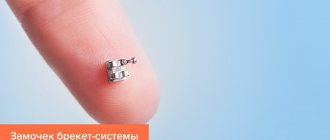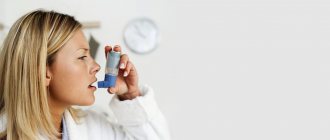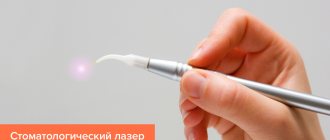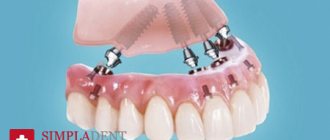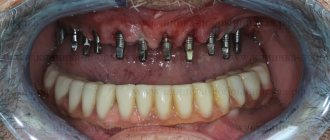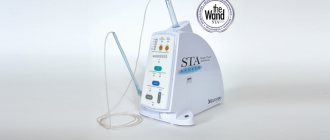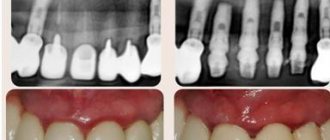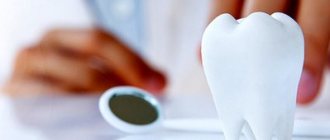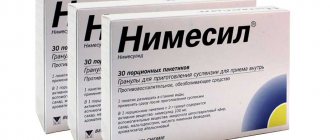The compatibility of simultaneous or alternate use of paracetamol and nimesil is the personal experience of the author, who almost died from such a combination.
I was a fool.
Because I didn’t ask in advance whether nimesil and paracetamol could be used together. Because of this, I almost went to another world.
There were several motives for committing terrible drug-induced violence against oneself.
- Firstly, I was in a hurry to get better; I developed some kind of terrible viral bronchitis, which could very well turn out to be a real coronavirus. I couldn’t get sick – I had a small child in my arms and an elderly man who required constant care.
- Secondly, we sell Nimesil in small bags individually, so the instructions had to be studied separately, and I was too lazy to do this. In addition, I have been using Nimesil for quite a long time - it is a fairly good remedy for headaches, or at the first signs of a cold. My throat started to hurt a little, I took the packet, and in the morning you are fine. At least, that's how it worked for me.
Paracetamol is also a proven remedy since childhood. I never thought that taking Nimesil and Paracetamol together would turn me into a zombie.
The first day
The cold just keeps on coming. Or maybe it's coronavirus? I sneeze loudly and quickly like a Kalashnikov machine gun, simultaneously making predictions that tomorrow the neighbors will shy away from me when they meet. The city has a special quarantine regime.
Temperature 37. Took 2 tablets of paracetamol at intervals of 4 hours. My head and throat hurt badly. Without a second thought, after 3-4 hours I took a packet of Nimesil, and at night another paracetamol tablet.
At night I felt sharply worse and developed a cough. I couldn’t sleep, except that I dozed for about 40 minutes at the table.
Composition and dosage forms
Paracetamol is a substance from the non-steroidal non-narcotic group of analgesics with a pronounced antipyretic effect. Available in several pharmaceutical forms:
- tablets for oral administration: contain 200 or 500 mg of the active ingredient, packaged in blisters or packaging without cells;
- capsules: hard shell 500 mg;
- syrup and suspension: sweetish-tasting liquid, contains 2.4% paracetamol (24 mg per 1 ml), packaged in glass bottles of 50 and 100 ml;
- 1.5 percent aqueous solution for infusion: colorless transparent liquid in ampoules of 5 ml;
- rectal suppositories: in a dosage of 50–500 mg, packaged in cell contour plates.
Second day
The cough is becoming more intense. I take mucaltin, lozenges for a sore throat, and also irrigate my cold throat with the drug “Inhalipt”. I took a paracetamol tablet in the morning and at lunchtime.
I would like to lie down, but I need to take pills to my sick grandmother. Without contacting anyone, I jump into the car and drive, feeling like I’m in a fog.
The sore throat went away, but in the evening I had a severe headache again. The cough becomes very intense, and heaviness appears in the chest. I drink a packet of Nimesil again, hoping that the syndrome will be relieved. This helps for a while.
I can't sleep at night. I'm coughing. Whistling breathing. Bronchitis. I suffer, I try sounds of nature, try different positions, but I can’t fall asleep. The pulse on the smart watch shows about 100 beats per minute.
Temperature. The second sleepless night and fever are cruel.
I'm squeezed like a lemon.
Medicines in dental practice. Part II
In the last post, we talked about the general principles of prescribing medications in outpatient dentistry. The topic is still relevant, it can be commented on and discussed.
Today I propose to take a more specific look at painkillers and anti-inflammatory drugs in dental practice, and at the end of this post you will find a small gift.
In order not to turn all this into a dull lecture on pharmacology, I will tell you only about those drugs that I use myself and for which I have my own clinical observations.
Attention!
This entry is not a doctor’s prescription, not a recommendation for patients, but a simple information message, a generalization of one’s own experience with medications. Never take medications without a doctor's prescription.
So, let's begin.
General information about pain medications.
All medications that we call “painkillers” (analgesics) can be divided into two large groups.
First group
- narcotic analgesics: morphine, heroin, fentanyl, sodium hydroxybutyrate, etc.
A distinctive feature is the effect, first of all, on the central nervous system (CNS), hence the ability to relieve even very severe pain.
The disadvantages are addiction, sedation, mental or physical dependence, depression of vital CNS centers up to cardiac and respiratory arrest.
In outpatient dentistry, narcotic analgesics are not used. For obvious reasons, drug use should be supervised by a doctor.
Second group
- non-narcotic analgesics: analgin, ibuprofen, butadione, nimesulide, etc.
Day three
It was not possible to sleep. I carry out treatment according to the old procedure, again a combination of paracetamol and nimesil, because my head hurts.
I decided that the main cause of lack of sleep was pulmonary obstruction. After all, everyone writes about it. This is logical: the pulse is high, since the heart cannot cope, the cough is strong, a feeling of shortness of breath, in general, there is little oxygen in the blood.
I feel bad. The heart seizes, the pulse does not calm down. I order home delivery of an oximeter. If the saturation is low, I will call an ambulance.
They brought an oximeter, measurements showed a saturation of 95-97 units. Almost normal. But why am I not sleeping? There is a noise in my ears, but my consciousness is surprisingly clear. I try to fall asleep a million times, the cough torments me, but not too much, it’s a hell of a headache.
And again I “repeated” taking paracetamol and Nimesil that day. Can you guess what caused the insomnia?
My heart was already hurting constantly, the pain went away when I took the next “bag”.
Differences
Paracetamol is the only NSAID that selectively affects the synthesis of cyclooxygenase type 3 (COX-3). This biologically active substance is involved in the mechanism of pain and fever, but unlike cyclooxygenases types 1 and 2, COX-3 is not synthesized directly at the site of inflammation.
Suppression of COX-3 synthesis by paracetamol leads to a decrease in elevated temperature during fever and a decrease in pain, but has virtually no effect on the intensity of the inflammatory reaction directly at the site of inflammation. Therefore, it is advisable to use paracetamol as an antipyretic and mild pain reliever.
Nimesulide, the active ingredient of the drug Nimesil, is a predominant inhibitor of cyclooxygenase type 2 (COX-2). Suppression of the synthesis of COX-2, with a weak effect on COX-1, distinguishes nimesulide from other anti-inflammatory drugs by a number of positive qualities: less gastro- and nephrotoxicity, less effect on blood clotting. Another positive quality of the drug is its ability to inhibit the activity of enzymes that damage cartilage cells, which slows the progression of osteoarthritis.
Paracetamol is used in pediatric practice for the symptomatic treatment of pain and fever in children of the first years of life.
In pediatric practice, paracetamol is used for the symptomatic treatment of pain and fever in children of the first years of life. The use of nimesil in children is allowed from 12 years of age.
Day four
During the next night vigil, I began to analyze the intake of all the drugs that I took.
And here a quote from the instructions for Nimesil pops up:
Contraindication is concomitant (simultaneous) use of drugs with potential hepatotoxicity, for example, paracetamol...
Then I read the side effects that paracetamol gives:
Mental disorders (often) – insomnia, anxiety. From the nervous system - headache, dizziness, psychomotor agitation, disorientation.
So Nimesil, together with paracetamol, somehow led to persistent insomnia
. Truly narcotic, endless, irresistible.
In addition, gastrointestinal disorders were observed. Wild thirst, which I, again, attributed to the temperature. Constant runs to the toilet.
I realized that any more and I would have had a heart attack. And it is still unknown how my experiments will turn out in the future. I hope there will be no consequences.
Precautionary measures
Carefully
Arterial hypertension, diabetes mellitus, compensated heart failure, coronary heart disease, cerebrovascular diseases, dyslipidemia/hyperlipidemia, peripheral arterial disease, hemorrhagic diathesis, smoking, creatinine clearance 30-60 ml/min.
History of ulcerative lesions of the gastrointestinal tract; history of infection caused by Helicobacter pylori; elderly age; long-term previous use of NSAIDs; severe somatic diseases.
Concomitant use with the following drugs: anticoagulants (for example, warfarin), antiplatelet agents (for example, acetylsalicylic acid, clopidogrel), oral glucocorticosteroids (for example, prednisolone), selective serotonin reuptake inhibitors (for example, citalopram, fluoxetine, paroxetine, sertraline).
conclusions
A combination of paracetamol and nimesil can cause kidney cancer, liver damage, and gastrointestinal bleeding.
Overall, the very powerful energizing effect that I have discovered the hard way feels equivalent to drinking several cups of strong latte. Perhaps, if a person does not have a cold and is absolutely healthy, he may even experience some positive aspects from the compatibility of these drugs. In any case, consciousness and mental activity remain very clear even after the third night.
What can I say finally? Do not mix different medications. Even paracetamol with aspirin. Remember that this is truly deadly.
Recently, ibuprofen has been increasingly used for viral diseases, coronavirus, and tracheobronchitis. It lowers the temperature and has an anti-inflammatory effect.
As for paracetamol, it should be used only as a single dose, and only by people with a healthy liver.
Effectiveness studies
The extensive list of contraindications and side effects does not make the most pleasant impression, but in essence it only means that it is important to follow the rules of administration, dosage, and before using the powder, it is important to make sure that you have no contraindications.
In fact, Nimesil is even safer than analgin, aspirin or ibuprofen; this drug is well tolerated. Nimesil is banned in some countries overseas, but in Europe this medicine is freely available. Doubts about the safety of nimesulide have led scientists to scrutinize the risks.
In 2009, the results of a safety study of Nimesil were published. Experts have concluded that the total risk of side effects when taking nimesulide is lower than when using other non-steroidal anti-inflammatory drugs [1]. The researchers also paid attention to the affordable price of the drug, calling it an important social factor.
So, the drug is quite safe, but another question remains open: how effective is nimesulide for diseases of the musculoskeletal system?
This question was asked by the authors of a study on the treatment of rheumatoid arthritis. They studied the response to the drug in 52 patients with a definite diagnosis, giving them 200-400 mg of Nimesil for 12 weeks. And if 44 patients noted improvement, only 8 people complained of side effects.
Therefore, the researchers came to the conclusion that Nimesil is safe and highly effective [2]. A separate study was devoted to the effectiveness of the drug in gouty arthritis - and again experts noted high effectiveness with good tolerability [3].
The results of long-term observation and data analysis confirmed the high effectiveness of Nimesil for relieving acute and chronic gouty inflammation.
The drug has also demonstrated good results in the treatment of primary osteoarthritis. This time the focus was on the interaction of Nimesil with Curantil, a drug that is used to treat the cardiovascular system, including thrombosis. This medicine dilates blood vessels and increases the amount of oxygen in the blood. Combination therapy for osteoarthritis turned out to be not only effective, but also safe: no side effects were noted [4].
Full texts of studies:
- Karateev A.E. Nimesulide: safety issues and the possibility of long-term use // https://medi.ru/doc/g421509.htm
- Balabanova R.M., Belov B.S., Chichasova N.V. Efficacy of Nimesil for rheumatoid arthritis // https://www.pharmateca.ru/ru/archive/article/5352
- Nasonova V.A. Barskova V.G. Yakunina I.A. Experience of using Nimesil in the treatment of gouty arthritis // https://www.rmj.ru/articles/obshchie-stati/Opyt_primeneniya_Nimesila_v_lechenii_podagricheskogo_artrita/
- Prihoda I.V. Efficacy and safety of combination therapy using Nimesil and Curantil in patients with primary osteoarthritis // https://www.sportpedagogy.org.ua/html/journal/2008-05/08pivppo.pdf
Buy Nimesil (Nimesulide) in an online pharmacy
Acute toothache in children
The cause of acute toothache in a child can be simply a reaction to sweet, sour, cold and hot foods, or pulpitis or caries. An urgent visit to a doctor is necessary. To alleviate the condition, you can give your child Paracetamol or Ibuprofen in a dosage corresponding to the age norm, or children's Nurofen. Taking other painkillers is highly undesirable due to the large number of side effects.
Acute toothache worsens at night
Prevention of acute toothache
To prevent the occurrence of acute toothache, preventive measures are required, and if the first signs of discomfort or visible changes in the appearance of the tooth or oral mucosa appear, you should consult a doctor.
Preventive measures include:
- brushing teeth twice a day;
- using dental floss, brush or irrigator;
- preventive visit to the dentist every six months. This will allow you to cure caries at the initial stage and prevent the development of complications;
- quitting smoking – tobacco smoke changes the biochemical composition of saliva and promotes the formation of dental plaque;
- refusal of sweet and soft foods: sugar is a substrate for feeding microorganisms, and when eating soft foods, natural teeth cleansing does not occur.
Following these simple rules and promptly contacting the doctors of our clinic will preserve your health and save your budget. After all, it is easier and more financially profitable to prevent a disease than to treat it later! And the question of how to relieve acute toothache will no longer arise.
Treatment of acute toothache at home
It is undesirable to self-medicate and use traditional medicine methods to relieve even severe tooth pain, since they do more harm than good. The use of some techniques may cause complications. A striking example is the appearance of an abscess and phlegmon after the use of heat (“warming up” a sore spot) during an inflammatory process.
The best way out of the situation is to visit the dentist as soon as possible; as a last resort, take medication to relieve pain and then consult a doctor.
Some traditional methods that can be used:
- applying a cold compress to the cheek or a piece of ice to the sore tooth for a short time will somewhat reduce the pain (cold will constrict the blood vessels and slow down the rate of spread of inflammation). Be careful: do not allow cold to come into contact with the skin, especially for a long time, to avoid frostbite;
- rinsing with a solution of 3% hydrogen peroxide and water effectively fights pathogenic microflora and helps remove plaque, softening it. For the same purpose, rinsing with a solution of chlorhexidine and miramistin is effective;
- An alcohol compress on the tooth cavity somewhat reduces pain for a short time due to its analgesic effect and disinfection. Place a piece of cotton wool soaked in alcohol or vodka inside the carious cavity;
- rinsing with a solution of soda (1 tsp per glass of water) and/or salt (1 tsp per glass of water) reduces swelling and nerve compression by reducing osmotic pressure in the tissues. Effective for discomfort caused by eating. Rinse for 5-10 minutes;
- rinsing with infusion of chamomile and sage reduces inflammation and swelling of the gums. 2 tbsp. pour 1 cup of boiling water over the herbs and leave for 15-20 minutes. Rinse with warm infusion 4-6 times a day.
Is it possible to tolerate toothache?
In case of short-term acute pain caused by sour or sweet food getting into the caries cavity, which goes away after rinsing and the irritant stops acting, a visit to the dentist can be postponed for a couple of days. This pain is typical for shallow caries and enamel erosion.
But it happens that the tooth hurts, and then it stops and the person does not seek medical help. In fact, the disease that provoked the appearance of unpleasant sensations becomes chronic, and the cessation of pain may indicate the death of the pulp, the transition of the pathological process beyond the boundaries of the tooth (asymptomatic process). Often the tooth subsequently has to be removed, and the inflammatory process spreads to other organs and tissues; in complex and advanced situations, conservative treatment is ineffective and surgical intervention is no longer possible.
Temporary relief of acute toothache is not a sign of recovery
Complications
By postponing an appointment with the dentist, you risk getting serious complications instead of one bad tooth:
- pulp necrosis – death and destruction of connective tissue cells filling the tooth cavity;
- periodontitis – after the death of the pulp, the process spreads beyond the tooth and inflammation of the tissues of the pulp chamber begins;
- abscess - a purulent process of the soft tissues of the oral cavity or the body of the jaw;
- phlegmon is a diffuse purulent process that spreads through the intercellular spaces of the soft tissues of the face, neck and chest.
When exactly do you need to see a doctor urgently?
A dental consultation is required if you have:
- pain does not go away within 24 hours (within 2 days if the pain appeared after removal, implantation, or surgical procedures);
- if pain of any intensity in the jaw is accompanied by fever and/or general malaise;
- an independent examination of the oral cavity revealed a gingival hood (redness, swelling of the gums) or purulent inflammation;
- the intensity of the pain syndrome gradually increases;
- bleeding gums and soreness.
Darkening of the tooth indicates destruction of its structure from the inside. Only a specialist can judge the true extent of the damage. The dental clinic “Yulistom” accepts patients seven days a week by appointment, and in case of acute toothache, emergency care is provided on the day of the call, we will accept you without a queue.
